How to Insulate a Shipping Container from Heat and Cold
 Becca Hubert | Sep 2, 2025
Becca Hubert | Sep 2, 2025

Modified shipping containers are used for multiple applications and in many regions across the United States—all the way from the heat of a Texas summer to the frigid cold of a Minnesota winter. But how do you insulate a shipping container to stay cool and warm in these climates?
Watch for practical insulation options to keep container structures energy efficient year-round.
Why Insulating a Shipping Container Is Essential for Comfort & Efficiency
Insulation is essential for creating a comfortable and energy-efficient container structure. According to the U.S. Department of Energy, nearly 50% of annual energy costs go toward heating and cooling—and in extreme climates, that number can be even higher. Proper insulation minimizes how hard your HVAC system works, lowering energy consumption and reducing utility bills.
Steel is a great structural material, but it’s a poor insulator. A shipping container’s metal walls absorb heat in summer and release warmth in winter, making the interior feel like an oven or a freezer without climate control. That means insulation isn’t optional if you plan to:
- Use your container as a workspace or living space
- Store temperature-sensitive equipment, electronics, or goods
- Maintain a stable environment for critical operations
The right type and thickness of insulation create a thermal barrier that stabilizes interior temperature, improves comfort, and protects valuable assets. Plus, insulation contributes to soundproofing and, depending on the material, fire resistance and moisture control.
| Ideal Use | Examples | R-Value | Installation Process | Key Benefits | |
|---|---|---|---|---|---|
| Styrofoam | Non-heat producing assets | Records storage, Animal feed storage | 4 (one-inch thickness) | Fast and easy; Requires no framing | Highly cost-effective |
| Batt | Living & workspace | Mobile container office, Locker room | 13 (3.5-in thickness); 19 (6-inch) | Fast and easy; Requires framing | Cost-effective; High R value |
| Spray foam | Enclosures for heat-producing equipment | Server rooms, Water treatment equipment enclosures | 6 (1-inch thickness); 12 (2-inch); 18 (3-inch) | Calls for specialty equipment; Requires no framing | Water-resistant; Hard finish; High R-value |
| Mineral wool |
Living & workspace Applications that require non-flammable materials |
Workspaces, living spaces, and storage | Living & workspace 13 on wall, 26 on ceiling (3.7 – 4.2 per inch) | Similar to batt but slightly more cumbersome; Requires framing |
Non-flammable; water resistant; high R-value |
Best Insulation Options for Shipping Containers: StyrofoamTM, Batt, Spray Foam & Mineral Wool
Styrofoam: Ideal for Basic Storage Containers
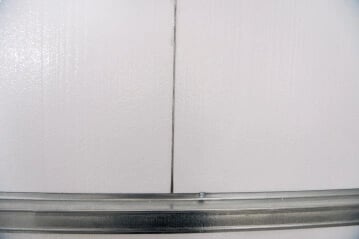
Fast and easy to install, polystyrene (commonly known by one brand name, Styrofoam) is a cost-effective way to add basic insulation to a storage container and has the added benefit of helping deaden sound. Using Styrofoam as the insulating material doesn’t require any build-out of stud walls to secure the panels (as batt insulation does).
The panels are glued directly onto the walls of the shipping container or mounted on bars that are flush with the walls, making it the most economical insulation method. Of the three types of insulation, it has the lowest R-value at 4, so it is most suitable for storage. Standard climate-controlled storage containers come with one inch of Styrofoam insulation which has a 50-year lifespan.
Batt Insulation: Ideal for Container Offices and Living Spaces
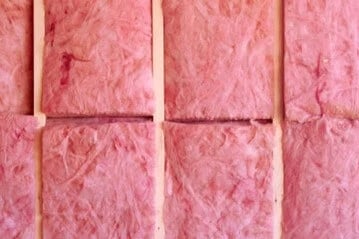
Made of finely woven strands of fiberglass, mineral wool, or plastic fibers, batt insulation—the pink cotton-candy-like material you’ve likely seen in attics and crawl spaces—is the industry standard for residential and office structures. Customers usually opt to use batt insulation for container offices and living spaces.
Once the shipping container’s interior wood framing is in place, batt insulation is easy to install and conceal behind a vapor barrier and plywood finish-out. While the insulation itself is very cost-effective, the framing and plywood can add extra costs. However, its superior performance will significantly reduce heating and cooling costs, bringing greater value over time. Batt insulation with an R 13 or R 19 rating is recommended to create comfortable living and working environments, and it has a lifespan of 100 years.
Spray Foam: Ideal for Temperature-Sensitive Equipment Enclosures
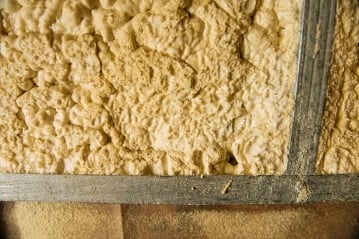
As its name suggests, spray foam insulation is sprayed onto interior surfaces where it expands slightly and sets as a hard, water-resistant covering. While not aesthetically pleasing on its own, spray foam requires no framing because it adheres to the shipping container walls. It has a high R-value (R = 6 per inch of thickness) and a long lifespan of 80 years.
Although there are interior finishes offered to cover spray foam, such as plywood or aluminum walls, customers looking for a purely functional climate-controlled space for temperature-sensitive equipment will sometimes choose spray foam with no further finish-out.
The nature of spray foam insulation includes other benefits, too:
- Acts as a sound barrier
- Won’t settle over time the way batt can
- Resists mold, fungus, and bacteria
While spray foam insulation has many benefits, it also requires specialty equipment and a skilled installer. We don’t recommend this as a DIY project.
Mineral Wool: Ideal for Applications That Require Non-Flammable Insulation Materials
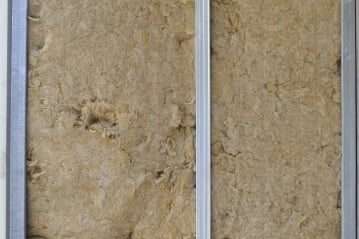
Mineral wool is sometimes called rock or slag wool insulation because it’s made from rock, blast furnace slag, or other melted raw materials. These materials are spun into fibers that appear to have a similar texture to wool. Mineral wool is used for living spaces but is ideal for applications that require a non-flammable insulation option.
The installation of mineral wool requires framing, like rolled batt, but steel framing helps with entirely non-flammable projects. An R-value of 13 on the walls and 26 on the ceiling helps deaden sound and provides thermal insulation while repelling water.Keep in mind that mineral wool can be challenging to source. We do offer it as an insulation option here at Falcon, but it’s not as common or easy to get as the other three.
Modified Shipping Container Insulation Done Right
The insulation you choose can make or break the performance of your container structure. From keeping energy costs low to protecting temperature-sensitive equipment, the right solution ensures your space is comfortable, efficient, and built for the long haul.
At Falcon, we bring deep expertise in container-based structures—from insulation strategies to full modifications—helping you design a solution that works as hard as you do.
Want expert guidance for your container project?
Let’s talk! Call us at 512-231-1010 or email our team at sales@falconstructures.com.
SUBSCRIBE
- Shipping Container Modifications
- How-Tos
- Workspace
- Commercial Construction
- Multi-Container Buildings
- Storage Solutions
- Industrial Enclosures
- Bathrooms & Locker Rooms
- Oil & Gas
- Climate Control
- Green Building
- Industry Insight
- Living Space
- Military & Training Facilities
- Water Treatment Solutions
- Energy
THINK INSIDE THE BOX®
WITH OUR BLOG
Get everything from shipping container basics, to detailed how-tos and industry news in our weekly blog. Stay inspired and subscribe!
RELATED BLOGS
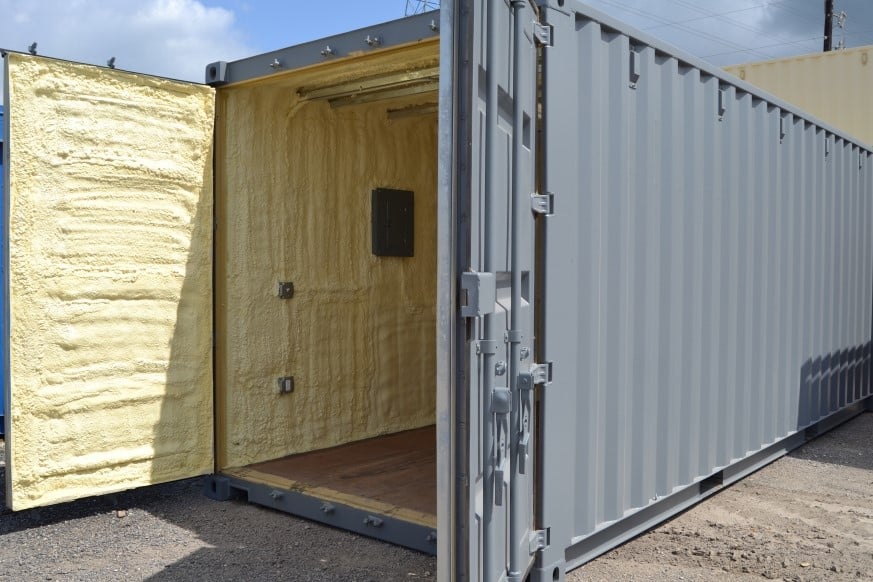
What You Need to Know About Insulated Conex Containers
Marissa Morin | May 10, 2023 | 4 min read
READ MORE
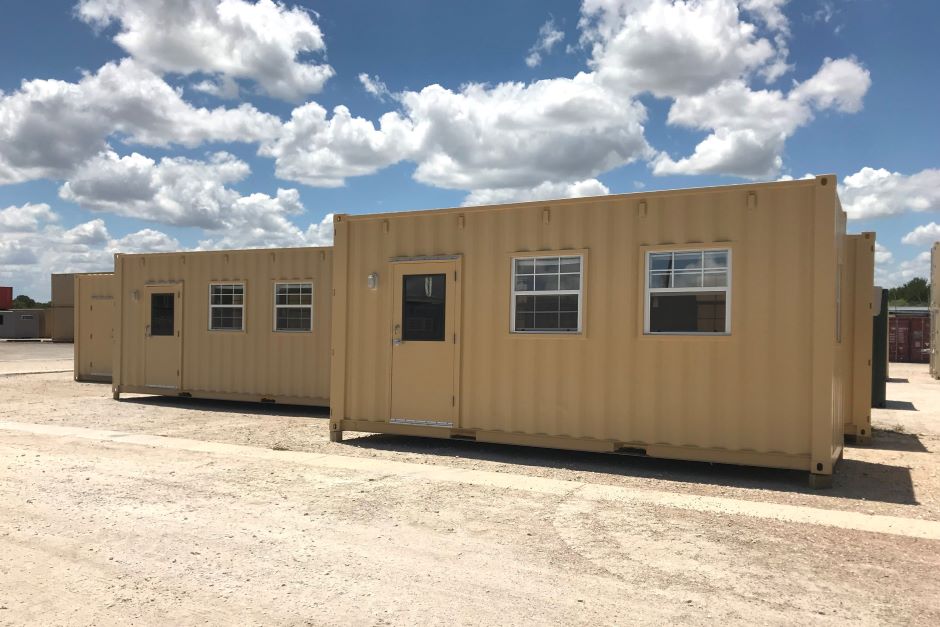
How Modified Shipping Container Workspaces Beat the Heat
Becca Hubert | Aug 9, 2023 | 4 min read
READ MORE
Shipping Container Insurance: How to Protect Your Jobsite Office
Marissa Morin | May 17, 2023 | 3 min read
READ MORE
